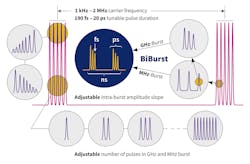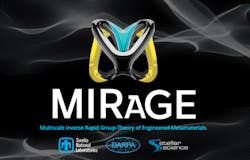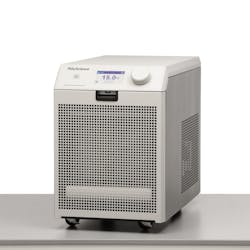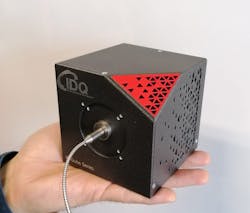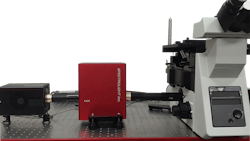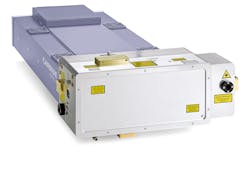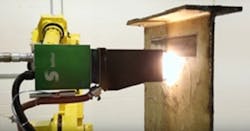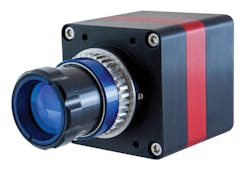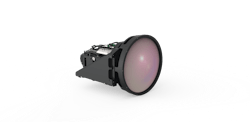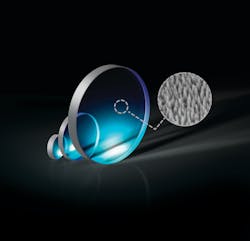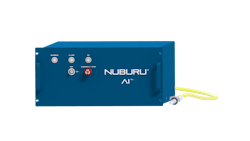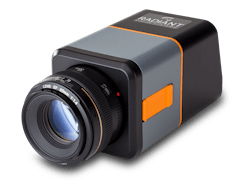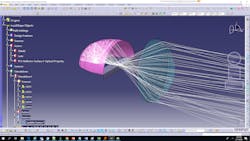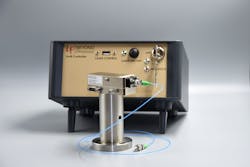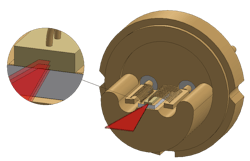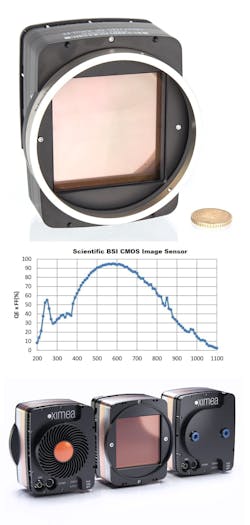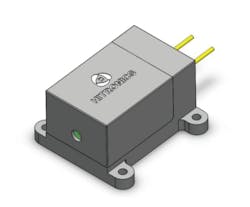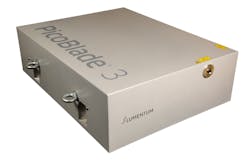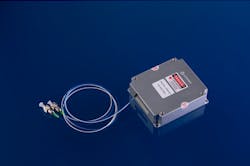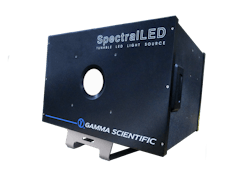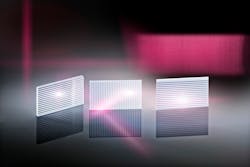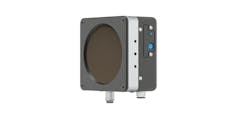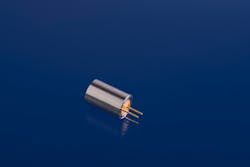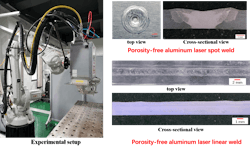Laser Focus World’s Innovators Awards program celebrates the disparate and innovative technologies, products, and systems found in the photonics market.
Based on the impartial ratings by our judges, awards were assigned in four different levels—Bronze, Silver, Gold, and Platinum—to companies or organizations that demonstrated excellence in a product or technology, an application, or in research and development.
Submissions were judged on originality; innovation; their impact on designers, systems integrators, or users; whether they fulfilled a new market need; leveraged a novel technology; and/or increased productivity.
To celebrate our third annual Innovators Awards Program, Laser Focus World held a webcast ceremony on October 12, 2020, for all honorees. Here, in their own words, the 2020 group of honorees provides a look at where we stand on the leading edge of photonics products and applications.
2020 INNOVATORS AWARDS: PLATINUM-LEVEL HONOREES
LASERS & SOURCES | CARBIDE 80 W, 800 µJ laser with BiBurst
An advanced laser technology dubbed BiBurst offers improved process control and production throughput via enhanced light-matter interaction. With advantages in applications such as brittle material drilling and cutting, deep engraving, selective ablation, volume modification, hidden marking, surface functional structuring, and transparent flexible materials processing, this tunable GHz and MHz burst with burst-in-burst capability brings new production capabilities to high-tech manufacturing industries such as consumer electronics, integrated photonic chip manufacturing, stent cutting, surface functionalization, and future display manufacturing. A unique set of tunable parameters enable process optimization and flexibility to adapt to different machining processes. Light Conversion (Vilnius, Lithuania; lightcon.com)OPTICS | MIRaGE: Multiscale Inverse Rapid Group-theory for Engineered-metamaterials
MIRaGE uses scientific knowledge developed from molecular spectroscopy on how the symmetry of a natural molecule affects its optical behavior and properties to design a metamaterial with comparable properties. By making the comparisons that molecules in chemistry are analogous to metamolecules in electromagnetics and that molecular modes of vibration are analogous to the fundamental resonant electrical current modes in a metamaterial, the principles of symmetry and point groups can be translated to electromagnetics. Serving as a basis for metamaterials design, MIRaGE facilitates the quest for unusual electromagnetic behaviors that can be associated with optical properties. Sandia National Laboratories (Albuquerque, NM; sandia.gov)DETECTORS & IMAGING | MV.X Embedded-Vision Hyperspectral Imaging System
Unlike conventional cameras, this embedded-vision imaging system does not require a separate computer to read and process imaging data. Instead, a small but powerful computer and solid-state memory inside the IP67-rated enclosure performs real-time classification and outputs the results over a GenICam-compliant GigE interface. Using modern machine-learning techniques, the MV.X captures hyperspectral data across the VNIR (400–1000 nm) wavelength range that is representative of the products it will see along the processing line, and an algorithm can be used to spectrally classify items such as food, plastic, stone, wood, textiles, paint/dye/pigment, or to grade products from bargain to premium. Headwall Photonics (Bolton, MA; headwallphotonics.com)2020 INNOVATORS AWARDS: GOLD-LEVEL HONOREES
INDUSTRIAL LASER SYSTEMS | DuraChill Portable Recirculating Chiller
The DuraChill line of liquid-to-air recirculating chillers incorporate innovative features including a self-changing air filter, a front-fill reservoir, and an ultraviolet light fluid sanitation system to create a more-reliable chiller that OEMs can confidently integrate into all their systems. DuraChill chillers are designed to simplify tasks, take less space, integrate more seamlessly, and provide better power stability, longer laser lifespan, more consistent beam profiles, fewer service calls, and increased mean time between failures (MTBF). PolyScience(Skokie, IL; polyscience.com)DETECTORS & IMAGING | ID Qube
The scalable ID Qube Series platform offers a modular design that makes complex single-photon counting easier and more cost-effective for scientific and industrial applications. The platform offers researchers a range of detectors, which in combination with its multipurpose Time Correlation Single-Photon Counting (TCSPC) electronics and the ID900 Time Controller, provide compact and cost-effective solutions to perform photon-counting experiments, as well as offer a scalable platform for experiments requiring multiple parallel detectors. ID Quantique(Carouge, Switzerland; idquantique.com)DETECTORS & IMAGING | FWS-HSI
The Flexible Wavelength Selector for Hyperspectral Imaging (FWS-HSI) allows microscope users to readily convert an existing microscope into a hyperspectral imaging microscope. The simple and compact approach to tunable wavelength filtering combines the wavelength-tuning and bandwidth-adjustment capabilities of a monochromator with the imaging functionality of a thin-film filter that is suitable for use in both illumination and image acquisition. The FWS-HSI provides end-users with a versatile and effective alternative to current tunable filtering technologies out in the market. Spectrolight (Irvine, CA; spectrolightinc.com)LASERS & SOURCES | Industrial Grade Optical Parametric Amplifier I-OPA
This new cost-efficient, compact, and user-friendly tunable femtosecond laser system opens possibilities for integrators to enter new markets with new applications. The compact and flexible module features three wavelength tuning ranges (320–2600 nm, 650–2500 nm, or 1350–10000 nm), <100 fs or ~250 fs output pulse durations, single shot to 2 MHz repetition rate, and up to 40 W pumping power. Such a laser source enables the possibility for extensive use in fields such as microscopic diagnostic multiphoton imaging systems at hospitals, and biological research institutions. It also opens up new possibilities for industrial applications that require system robustness such as material processing, cutting brittle materials, and consumer electronics manufacturing. Light Conversion (Vilnius, Lithuania; lightcon.com)INDUSTRIAL LASER SYSTEMS | HyperDisc Laser Ablation System
This 8 kW handheld portable laser ablation system relies on a patent-pending HyperDisc optic that uses a Risley prism as the beam scanner and enables 98% laser output utilization. Field-serviceable laser sources and quick-change lens configurations enable spot-size changes and simplify replacement and maintenance. Using off-the-shelf lasers, vacuum systems, chillers, control systems, robots, and generators, the unit is designed to easily configure for left- or right-hand use as well as a robotic mount. Fiber quick-disconnect allows for plug-and-play replacement if the unit is dropped or damaged. Cart-unit integration enables flexible transport options, including trailer, truck, container, or AGV. SurClean (Brighton, MI; surclean.com)DETECTORS & IMAGING | Owl 1280 camera
Unlike other SWIR cameras, the Owl 1280 camera with a 1280 × 1024 InGaAs sensor has a spectral range that extends all the way across the visible spectrum, resulting in a total range of 0.4 to 1.7 µm at high sensitivity that enables more subject matter to be imaged. The 10 × 10 µm pixel pitch enables high-resolution imaging with less than 40 electrons (e-) readout noise and with a large intra-scene dynamic range of 69 dB, enabling simultaneous capture of bright and dark portions of a scene. The camera runs from 10 up to 60 Hz and has onboard automated gain control (AGC) to enable optimal contrast images from low light to bright light. The camera is temperature-stabilized with no fan. Raptor Photonics (Larne, Northern Ireland; raptorphotonics.com)OPTICS | Ophir IR Thermal Imaging Long-Range 50–1350 mm Zoom Lens
Based on a high-accuracy folded optics design that fits a 20 in. airborne gimbal suitable for compact UAVs, the 50–1350 mm f/5.5 zoom lens is a state-of-the-art continuous zoom lens designed for applications where weight and size are critical. Suited for small-pixel VGA and HD IR cameras, the design enables performance close to the diffraction limit over a detection range >25 km, increasing imaging range of detection for IR surveillance, border control, and security systems, while also enabling gas leak detection and pre-identification of fire from long distances to support firefighting operations. Ophir Optronics Solutions LTD, an MKS Company (Jerusalem, Israel; ophiropt.com)OPTICS | Nebular Technology
Nebular Technology is an alternative to traditional thin-film antireflection (AR) coatings for high-power laser applications. By etching subwavelength surface structures into the optic, the technology offers numerous advantages over traditional coatings, including high broadband transmission and near-bulk laser-induced damage threshold (LIDT). Because it does not involve depositing any additional materials onto the optic, the LIDT of nanostructured AR surfaces can approach that of the uncoated substrate, which is significantly higher than most traditional coatings. This is advantageous for high-power laser applications of all pulse durations, from continuous-wave (CW) to femtosecond pulses. Edmund Optics (Barrington, NJ; edmundoptics.com)LASERS & SOURCES | AI-1500
By combining the outputs of individual blue diode lasers, assembled in a physical package that arranges many diodes together, the 1500 W AI-1500 is the first blue laser capable of being integrated with standard scanning systems for copper, aluminum, stainless steel, and gold welding applications. The laser has two essential features; First, an emission wavelength around 450 nm, and second, high brightness resulting from a unique proprietary design approach. When seamlessly integrated with a standard 150 × 150 mm scanner, the 11 mm-mrad beam parameter product of the AI-1500 delivers the optimum power density for welding copper in existing high-speed automated processes. Nuburu (Centennial, CO; nuburu.net)BIO-OPTICS | Optical Tools to Fight Covid-19
Designed to detect fluorescence and color changes from dyes that activate in the presence of specific viral DNA or RNA, this Covid-19 detection system includes optical sources, filters, detectors, and temperature control systems to heat samples to the temperatures needed for Loop-Mediated Isothermal Amplification (LAMP) reactions, polymerase chain reactions (PCRs), or similar reactions, and then launch light through samples to detect fluorescence from the viral DNA/RNA. The initial systems test individual samples, but systems for testing 10 and 96 samples simultaneously are in development to enable mass testing at rates required for mass testing of the general population. OZ Optics (Ottawa, ON, Canada; ozoptics.com)
DETECTORS & IMAGING | ProMetric Y43 – 43-Megapixel Imaging Photometer
The ProMetric Y43 imaging photometer features a 43 Mpixel (8040 × 5360), scientific-grade CCD imaging sensor that is interline-cooled to limit image noise for highly accurate, repeatable imaging. Its high spatial resolution allows the camera to measure pixel and subpixel luminance variations across display bright states, applying several CCD pixels per display pixel to enable accurate pixel measurement and correction for today’s increasingly pixel-dense displays. The system identifies defects that are easily missed by human visual inspection or alternative measurement systems, completing a high-resolution measurement in less than 1.5 seconds, providing a solution for production-level applications such as in-line quality control and correction. Radiant Vision Systems (Redmond, WA; radiantvisionsystems.com)LASERS & SOURCES | High-Power Flexible Nanosecond/Picosecond Laser
The high-power flexible nanosecond/sub-nanosecond laser, dubbed the SN Series, offers both picosecond and nanosecond pulse widths from ~50 ps to 5 ns available on a single platform to provide flexibility for process/application development in a variety of existing and new applications. Achieving high power at high rep rates and high pulse energy at low rep rates, the SN Series is available from 10 to 100 W at 1064 nm, 5 to 70 W at 532 nm, and 3 to 35 W at 355 nm, impacting a myriad of novel existing and emerging industrial micromachining applications such as high-repetition-rate PERC solar processing, laser-based microstructure diagnostics and failure analysis, as well as other next generation laser-based applications such as 3D lidar. Photonics Industries (Ronkonkoma, NY; photonix.com)SOFTWARE | LucidShape CAA V5 Based Software
LucidShape CAA V5 Based v2020.06 introduces two new modules—Design and Visualize—that enable designers to quickly conceptualize and design automotive lighting products and generate stunning, physics-based photorealistic images that accurately depict how headlights, tail lights, and signal lights will look in real life. The software provides a complete design and visualization workflow solution for automotive lighting design within the CATIA V5 environment. Designers who are familiar with CATIA can easily leverage its powerful features with a minimal learning curve to produce automotive lighting products that meet performance, styling, visual branding, regulatory, and customer-specific requirements. Synopsys (Pasadena, CA; synopsys.com)LASERS & SOURCES | Swift Single-frequency Laser
The Swift is a compact, single-frequency, eye-safe diode-pumped laser optimized for use in coherent and direct detection lidar systems. A small, high-speed low-voltage piezo element inside the laser cavity provides fast and accurate tunability, and the mode-hop-free tuning range can be extended further via laser cavity temperature tuning. Exhibiting high continuous-wave (CW) output power and less than 10 kHz/ms short-term frequency jitter, it is suitable for use as a master and local oscillator source in coherent lidar systems. Very fast and broad mode-hop-free frequency tuning enables next-generation spectroscopic applications like pollution monitoring and greenhouse gas measurements using differential absorption lidar techniques. Beyond Photonics (Boulder, CO; beyondphotonics.com)2020 INNOVATORS AWARDS: SILVER-LEVEL HONOREES
LASERS & SOURCES | Multijunction Semiconductor Laser Diodes
This patent-pending, multi-junction semiconductor laser diode was designed to provide a high-power, long-reach, low-cost, safe, and efficient lidar solution for autonomous drones, cars, trucks, and maritime and aircraft platforms. By enabling autonomous lidar systems to reach greater than 250 m without compromise, this unique multi-junction semiconductor edge-emitting laser emits over 80 W with a slope efficiency of 1 W/A. Operating at 1550 nm, the triple-junction device provides three times the peak power of a single emitter, thus improving the resolution and penetration efficiency in bad weather. It can be operated at pulse widths between 2 and 10 ns at a 200–400 kHz pulse repetition rate. SemiNex Corporation (Peabody, MA; seminex.com)DETECTORS & IMAGING | MX377 Camera
Targeting scientific imaging applications, the MX377 camera features a PCIe interface, the GSENSE6060 37.7 MPixel sCMOS back-side illumination sensor from Gpixel, a 44 fps frame rate, and a quantum efficiency of 95%. The GSENSE6060 data output consists of two readout amplifiers (high and low), providing the possibility of HDR combination with up to 90 dB dynamic range. The readout from the two amplifiers results in a 16-bit dynamic range, and is customizable, which offers advantages for numerous applications such as high-energy physics, life science, TEM, astronomy, and space situational awareness. XIMEA (Broomfield, CO; ximea.com)LASERS & SOURCES | Colibri Hi-Rep 1.5 µm Laser
The Colibri HR 1.5 µm (Q-switched) laser combines a high repetition rate of 300 KHz with a pulse energy of 2 µJ and excellent beam quality in a 19 × 18 × 16.5 mm package. Plus, it costs a fraction of other low-cost 1550 nm pulsed fiber lasers on the market. Its impressive balance of performance with a high repetition rate, lower but improving pulse energy, and excellent beam quality, combined with its small size and low cost, enable diverse applications across ADAS, robotics, AGVs, rangefinders, and security. Hitronics Technologies (Milpitas, CA; hi-tronics.com)LASERS & SOURCES | PicoBlade 3
Available in IR, green, and UV wavelengths, the PicoBlade 3 delivers excellent beam quality, high pulse-to-pulse stability, and long-term output power stability at significantly higher power of up to 50 W at 355 nm over an extended range of repetition rates (400 kHz to 8 MHz). The higher-power PicoBlade 3 employs a new design that enables faster processing and improved throughput for micromachining applications including OLED, PCB, semiconductor, metal and solar cell processing, allowing users to cut through thicker substrates, decrease processing time, and improve quality. Lumentum (Milpitas, CA; lumentum.com)LASERS & SOURCES | Aqila Series 1.5 µm Fiber Lasers
The Aqila Laser Series sets a new benchmark for cost, size, and performance of 1550 nm fiber lasers. Achieving greater than 60% fiber coupling efficiency, it measures 50 × 55 × 19 mm and offers a 50% reduction in both cost and size, bringing 1550 nm lidars one step closer to mainstream adoption for autonomous vehicle applications. Not only will automobile manufacturers finally be able to afford the costs associated with the long-distance and high-performance ranging provided by 1.5 µm lidar, but they will also be more open to integrating smaller, less-obtrusive, and low-power consumption lidar into their vehicles. Hitronics Technologies (Milpitas, CA; hi-tronics.com)TEST & MEASUREMENT | SpectralLED RS-7-1-SWIR Tunable Light Source
The SpectralLED RS-7-SWIR Tunable Light Source delivers continuous broadband shortwave-infrared (SWIR) illumination with purely solid-state emission via nine LEDs, providing unparalleled performance and accuracy for SWIR image sensors and InGaAs detector characterization in the spectral range from 900 to 1700 nm. The platform is suited for laboratory or production line integration, with integrated temperature control for the LED array, and real-time optical feedback to ensure rock-solid stability and consistent results. Typical switching time between spectral profiles is on the order of 50 ms, and essentially any spectral profile is possible. Gamma Scientific (San Diego, CA; gamma-sci.com)2020 INNOVATORS AWARDS: BRONZE-LEVEL HONOREES
OPTICS | LIMO Wide Angle Diffuser
Designed for automotive lidar and 3D sensing applications, the LIMO wide-angle diffuser is a glass refractive optical element that combines complex refractive surface geometries and polished surface quality to disperse laser light in one direction. With a second functional surface, light can also be shaped at any angle in the other direction. The wide-angle diffuser is suitable for a variety of laser sources, including collimated, less collimated, diverging, or laser array, which could generate a precise top-hat or gradient farfield intensity profile, even up to 160° FOV angle. Non-symmetric farfield distribution is also possible. Focuslight Technologies (Xi'an, China; focuslight.com)TEST & MEASUREMENT | HP-BLU series wireless detectors for high-power lasers
The HP-BLU series wireless detectors for high-power lasers for laser power measurement up to 15 kW integrate a wireless data-transfer module that allows for remote monitoring at up to 30 m from the detector and is battery-operated to reduce cabling. They are available off-the-shelf in three power levels: 4 kW, 12 kW, and 15 kW, with custom models available up to 100 kW. With wireless output, high-power measurements in enclosures or hard-to-reach areas are less cumbersome. Proprietary optical absorbers have very high damage thresholds, allowing for continuous operation at maximum power, even for long-term monitoring. Gentec-EO (Québec City, QC, Canada; gentec-eo.com)LASERS & SOURCES | Colibri Hi-power 1.5 µm Laser
The Colibri HP 1.5 µm (Q-switched) laser has a low repetition rate of 100 Hz, but high pulse energy of 300 µJ with excellent beam quality. Proprietary technology enables an entirely new level of performance at 1.5 µm wavelength within an ultra-miniature size of 16 × 25 mm. The balance between size, performance, and cost has allowed companies to create completely unique designs for long-distance range finding and mapping. Furthermore, the extremely low cost at high-volume production allows the Colibri HP to fill a gap in the marketplace for these special applications. Hitronics Technologies (Milpitas, CA; hi-tronics.com)APPLICATIONS & CASE STUDIES | Super-fast Ultra-strong Laser Welding Process and System for Aluminum Alloys
This newly developed laser welding solution enables new products and cost efficiencies in existing aluminum-based products by producing porosity- and oxidation-free aluminum welds at ambient temperature without a shield gas. Not only does the process achieve higher joint strength than joints made using self-piercing rivets and flow-drilling screws, it also suppresses the formation of porosity and cracking in aluminum welds and significantly improves the surface quality. This newly developed laser welding technique has improved manufacturing flexibility and reduced costs in Cadillac CT-6’s door fabrication. Shanghai Institute of Optics and Fine Mechanics (Shanghai, China; english.siom.cas.cn)TEST & MEASUREMENT | Laserlux G7 Vision Mobile Retroreflectometer
The Laserlux G7 Vision bridges the gap between automotive and infrastructure industries, expanding photonics to new emerging markets by providing numerical values to stripe performance, and improving the quality of the roadway and airfield infrastructure, making them safer for all users. Through a small investment that pays for itself very quickly, and with the speed and efficiency at which it can collect data over an entire roadway or airfield network, this product helps create and maintain high-quality transportation infrastructure with well defined, visible road stripes. Gamma Scientific (San Diego, CA; gamma-sci.com)
John Lewis | Editor in Chief (2018-2021)
John Lewis served as Editor in Chief of Laser Focus World from August 2018 through October 2021, after having served as the Editor in Chief of Vision Systems Design from 2016 to 2018. He has technical, industry, and journalistic qualifications, with more than 13 years of progressive content development experience working at Cognex Corporation. Prior to Cognex where his articles on machine vision were published in dozens of trade journals, he was a technical editor for Design News, covering automation, machine vision, and other engineering topics, for over six years.

